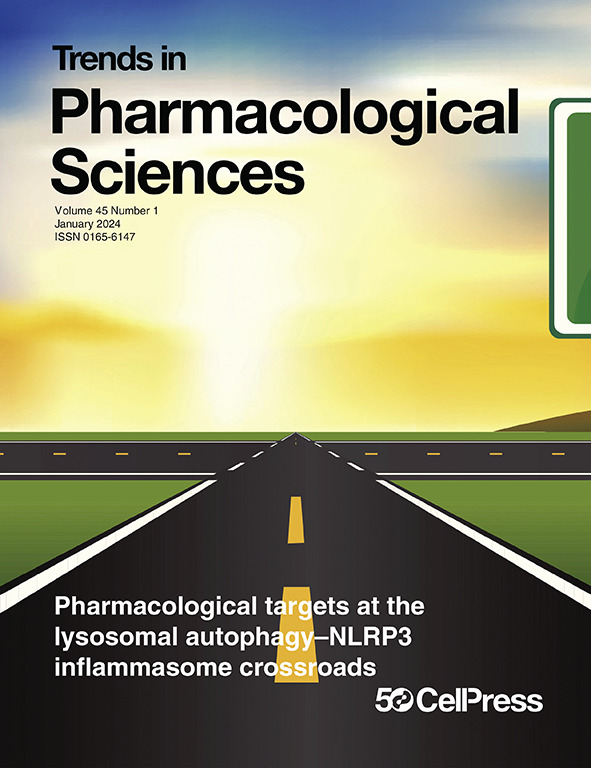Investigation of Mild Steel Corrosion in Hydrochloric Acid Solutions by Sodium carboxymethyl Cellulose and Polyethylene Glycol
IF 19.9
1区 医学
Q1 PHARMACOLOGY & PHARMACY
引用次数: 0
Abstract
Investigation of mild steel (MS) submerged into 2 M HCl solution alongside sodium carboxymethyl cellulose (SCMC) and its mixtures with polyethylene glycol (PEG) and potassium iodide (KI) respectively was investigated by weight loss measurements, potentiodynamic polarization measurements and scanning electron microscopy (SEM). SCMC was not-good-enough at low concentration of 0.5 g/L of 2 M HCl solution at 30 °C as its inhibition efficiency (IE) stood at 42.73 and 40 % for 24 and 120 h immersion, respectively. However, increasing content of SCMC to 2 g/L of 2 M HCl solution at 30 °C, rose IE to 61.64 and 57.60 % at 24 and 120 h immersion, respectively. Effect of 0.5 g KI and PEG, respectively on 2 g SCMC/L of 2 M HCl solution at 30 °C for 24 h immersion improved IE to 70.91 and 83.64 %, respectively. Conversely, increasing temperature reduced IE of SCMC from 57.60 % at 30 °C to 46.30 % at 60 °C for 120 h immersion within 2 g/L of 2 M HCl solution; whereas 67.20 and 51.85 % at 30 and 60 °C as well as 69.60 and 55.56 % at 30 and 60 °C, respectively were obtained on adding 0.5 g KI as well as PEG, respectively to the 2 g/L SCMC. It was shown that SCMC-KI and SCMC-PEG mixtures show better IEs than SCMC alone, while the best IE of 83.64 % was found for SCMC-PEG mixture after 1 day of MS exposure to 2 M HCl solution. All inhibitor compounds were of mixed-type and obey Langmuir adsorption isotherm. Corrosion inhibition was afforded by physisorption of inhibitor compounds on the MS, while the good synergistic effect was owing to competitive adsorption of inhibitive combinations and thus enhanced inhibitor coverages on the MS. SEM gave visual evidence of adsorption by the compounds on MS. HIGHLIGHTS Steel corrosion is a primary concern in the oil and gas industry In this study, mild steel corrosion in hydrochloric acid solution was inhibited by sodium carboxymethyl cellulose. However, enhanced inhibitive performance was afforded by the combination of sodium carboxymethyl cellulose and polyethylene glycol Mechanism of inhibition action by sodium carboxymethyl cellulose and polyethylene glycol was highlighted Chemical and electrochemical approach to corrosion study was utilized GRAPHICAL ABSTRACT羧甲基纤维素钠和聚乙二醇在盐酸溶液中腐蚀低碳钢的研究
通过失重测量、动电位极化测量和扫描电镜(SEM)研究了低碳钢(MS)与羧甲基纤维素钠(SCMC)及其与聚乙二醇(PEG)和碘化钾(KI)的混合物分别浸泡在2 M HCl溶液中。SCMC在低浓度0.5 g/L的2 M HCl溶液中,30°C浸泡24 h和120 h时的抑菌率(IE)分别为42.73%和40%,效果不佳。在30°C条件下,将SCMC添加到2 g/L的2 M HCl溶液中,浸泡24 h和120 h后,IE分别提高到61.64%和57.60%。0.5 g KI和PEG分别对2 g SCMC/L的2 M HCl溶液在30℃下浸泡24 h的影响使IE分别达到70.91和83.64%。相反,温度升高使SCMC的IE从30℃时的57.60%降低到60℃时的46.30%,浸在2g /L的2 M HCl溶液中120 h;在2 g/L SCMC中分别添加0.5 g KI和PEG,在30和60℃下分别获得67.20%和51.85%,在30和60℃下分别获得69.60%和55.56%。结果表明,SCMC- ki和SCMC- peg混合物的IEs优于SCMC单独使用,在MS暴露于2 M HCl溶液1 d后,SCMC- peg混合物的最佳IE为83.64%。所有抑制剂均为混合型,均服从Langmuir等温线吸附。缓蚀剂化合物在质谱上的物理吸附起到了缓蚀作用,而良好的协同效应是由于缓蚀剂组合的竞争性吸附而产生的,因此增强了缓蚀剂在质谱上的覆盖范围。扫描电镜(SEM)提供了化合物在质谱上吸附的视觉证据。本文重点介绍了羧甲基纤维素钠和聚乙二醇的缓蚀作用机理,并利用化学和电化学方法对其进行了腐蚀研究
本文章由计算机程序翻译,如有差异,请以英文原文为准。
求助全文
约1分钟内获得全文
求助全文
来源期刊
CiteScore
23.90
自引率
0.70%
发文量
132
审稿时长
6-12 weeks
期刊介绍:
Trends in Pharmacological Sciences (TIPS) is a monthly peer-reviewed reviews journal that focuses on a wide range of topics in pharmacology, pharmacy, pharmaceutics, and toxicology. Launched in 1979, TIPS publishes concise articles discussing the latest advancements in pharmacology and therapeutics research.
The journal encourages submissions that align with its core themes while also being open to articles on the biopharma regulatory landscape, science policy and regulation, and bioethics.
Each issue of TIPS provides a platform for experts to share their insights and perspectives on the most exciting developments in the field. Through rigorous peer review, the journal ensures the quality and reliability of published articles.
Authors are invited to contribute articles that contribute to the understanding of pharmacology and its applications in various domains. Whether it's exploring innovative drug therapies or discussing the ethical considerations of pharmaceutical research, TIPS provides a valuable resource for researchers, practitioners, and policymakers in the pharmacological sciences.

 求助内容:
求助内容: 应助结果提醒方式:
应助结果提醒方式:


